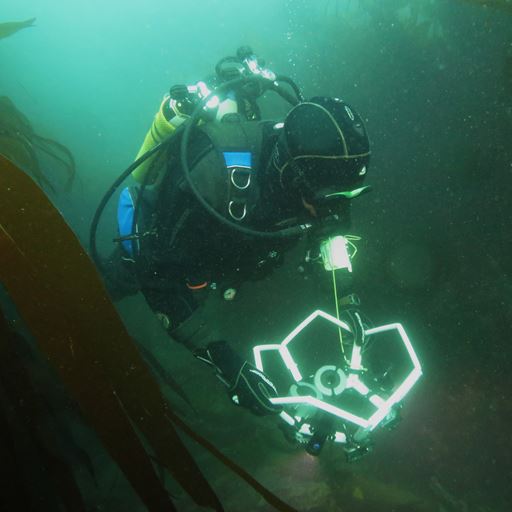Shipwreck which heralded RNLI captured as 3D model
-
Date
Tue 3 Jan 23

The site of a 200-year-old shipwreck which was the catalyst of what was to become the Royal National Lifeboat Institution (RNLI) has been captured for the first time in 3D.
British naval ship HMS Racehorse smashed to pieces on a rocky reef off the coast of the Isle of Man on 14 December 1822 and 98 men survived thanks to the men from Castletown who braved the storm to rescue those on the stricken ship.
Dr Jon Chamberlain, from the University of Essex’s School of Computer Science and Electronic Engineering, has now used his expertise in photogrammetry – the method of extracting 3D information from photographs – to create a 3D image of the underwater wreck site.
Earlier this year he was invited to join the Isle of Man branch of the British Sub Aqua Club in a diving expedition to rediscover the wreck of HMS Racehorse, which still contained artefacts such as ballast weights, cannon balls, musket balls and one the ship’s anchors. The divers wanted to photograph and record the site using GPS coordinates to ensure futures divers could easily find it.
Computer scientist Dr Chamberlain was already known for his research using multi-camera photogrammetry to successfully document the Norfolk chalk reef and expedition leader Leigh Morris wanted to see if he could capture the wreck site of the Racehorse in 3D.
“The site was a series of kelp-topped narrow gullies which were difficult to locate and navigate around,” explained Dr Chamberlain. “With very limited survey time, I used the multi-camera system to rapidly photograph the area from multiple angles. Back on shore the photographs were processed into a 3D model of the north and south gullies and the results exceeded our most optimistic expectations.”
His 3D models are now part of a special exhibition, supported by Manx National Heritage on the Isle of Man, marking the 200th anniversary of the sinking of HMS Racehorse.
“The HMS Racehorse shipwreck marks a key moment in maritime history as it was the catalyst for a chain of events which led to the creation of the RNLI. It was a great opportunity to be part of the dive which rediscovered the wreck and to use our 3D technology to map what is left of this ship so an accurate inventory and measurements can be taken of the artefacts on the seabed.”
The plan of the 3D models overlaid accurately onto the survey map produced by divers in the 1980s using tape measures and compasses, highlighting what an impressive job they did in that dive all those years ago and also how far technology has progressed to be able to replicate that work in a single survey dive.
The 3D models are available on the Manx Museum website, allowing visitors the chance to dive virtually on the wreck site and explore an important part of the Isle of Man's history.
Picture of Dr Jon Chamberlain courtesy of Leigh Morris/IOMSAC
.jpg?mh=500&mw=500&hash=6568B6C9CCF5290A596BEF6678B6AD0E)



